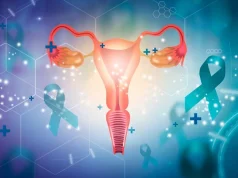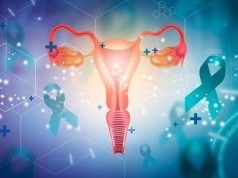Sensitivity higher, but some loss seen in specificity, when compared with Risk of Malignancy 1 index at threshold of 250
By Elana Gotkine HealthDay Reporter
WEDNESDAY, Oct. 16, 2024 (HealthDay News) — The International Ovarian Tumour Analysis consortium (IOTA) Assessment of Different Neoplasias in the Adnexa (ADNEX) at 10 percent is more sensitive, but less specific, for diagnosing ovarian cancer compared with Risk of Malignancy 1 (RMI1) at 250, according to a study published in the October issue of The Lancet Oncology.
Sudha Sundar, from the Institute of Cancer and Genomic Sciences at the University of Birmingham in the United Kingdom, and colleagues conducted a multicenter, prospective diagnostic accuracy study involving newly presenting female patients aged 16 to 90 years with nonspecific symptoms and elevated CA125, abnormal ultrasound results, or both. The analysis included only postmenopausal participants. Participants completed a symptom questionnaire, provided a blood sample, and underwent transabdominal and transvaginal ultrasounds. Data were included from 1,076 participants to examine diagnostic accuracy at predicting primary invasive ovarian cancer versus benign or normal histology.
The researchers found that compared with RMI1 at a threshold of 250 (sensitivity, 82.9 percent; specificity, 87.4 percent), IOTA ADNEX at 10 percent was more sensitive but less specific (difference of −13.9 and 28.5 percent, respectively). Similar sensitivity and lower specificity were seen with the Risk of Malignancy Algorithm at 29.9 (difference of −3.6 and 5.2 percent, respectively). Similar sensitivity and lower specificity were seen for RMI1 at 200 (difference of −2.1 and 3.0 percent, respectively) and for the IOTA Simple Rules Risk model at 10 percent (difference of −4.3 and 16.2 percent, respectively). IOTA Simple Rules had similar sensitivity and specificity (difference of −1.6 and −2.2 percent, respectively). CA125 at 35 IU/mL had similar sensitivity and higher specificity (difference of −2.1 and 6.7 percent, respectively).
“A health economic analysis is underway and will be crucial to understand the broader effects of our findings,” the authors write.
Several authors disclosed ties to the biopharmaceutical industry.
Copyright © 2024 HealthDay. All rights reserved.








